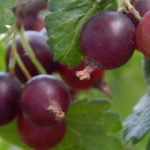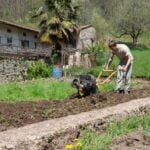Are you looking to save water in your vegetable garden? In this article, we will discuss various water-saving tips for vegetable gardening to help you conserve this precious resource while still maintaining a thriving garden. With the increasing concerns about water scarcity and rising water bills, it is important to adopt sustainable practices in our gardening endeavors. By implementing these water-saving tips, not only can we reduce our environmental impact but also save on costs.
Excessive water use in vegetable gardening can have detrimental effects on the environment and contribute to higher water bills for homeowners. Therefore, it is crucial to explore ways to minimize water consumption without compromising the health and productivity of our gardens. From selecting water-efficient vegetables to utilizing efficient watering techniques, there are numerous strategies that can be employed to promote water conservation in vegetable gardening.
In the following sections, we will delve into various methods and best practices for saving water in vegetable gardening. From soil preparation and mulching to companion planting and rainwater harvesting, there are several approaches that can help maximize the efficiency of water usage in your garden. By incorporating these techniques into your gardening routine, you can create a more sustainable and environmentally friendly garden while also reducing your reliance on traditional irrigation methods.
Selecting Water-Efficient Vegetables
When it comes to water-saving tips for vegetable gardening, one of the most effective strategies is to choose vegetables that require less water to thrive. By selecting water-efficient varieties, gardeners can significantly reduce their overall water consumption while still enjoying a bountiful harvest. Drought-tolerant vegetables are an excellent choice for regions with limited water availability or for gardeners looking to minimize their environmental impact.
Highlighting Water-Efficient Vegetables
Some vegetables naturally require less water than others, making them ideal choices for water-conscious gardeners. Examples of water-efficient vegetables include root crops such as carrots, radishes, and beets, as well as leafy greens like kale, spinach, and Swiss chard.
Additionally, certain herbs such as rosemary, thyme, and sage are known for their ability to thrive in drier conditions. By prioritizing these types of vegetables in your garden, you can save significant amounts of water without sacrificing the quality or variety of your produce.
Choosing Drought-Tolerant Varieties
In addition to selecting inherently water-efficient vegetables, gardeners can further optimize their water usage by choosing specific varieties bred for drought tolerance. For example, some tomato cultivars are specifically bred to require less moisture and withstand dry conditions.
Similarly, there are drought-tolerant varieties of peppers, cucumbers, and other popular garden vegetables that can thrive with minimal irrigation. By researching and selecting these specialized plant types for your vegetable garden, you can maximize your water savings without compromising on yield or flavor.
By focusing on both inherently water-efficient vegetables and drought-tolerant varieties within those categories, gardeners can make a significant impact on their overall watering needs. Through thoughtful selection and strategic planning, it’s possible to create a thriving vegetable garden that conserves precious water resources while still producing an abundant harvest.
Soil Preparation and Water Retention
One of the most crucial factors in water conservation for vegetable gardening is proper soil preparation and the ability to retain moisture. Good soil structure can significantly impact the amount of water needed for your plants to thrive. By implementing the right techniques, you can maximize water retention in your garden while minimizing wastage.
To improve your soil’s water retention capacity, consider adding organic matter such as compost or well-rotted manure. These materials help create a sponge-like environment that holds onto water, making it available to plant roots when needed. Additionally, incorporating mulch into your soil can also help retain moisture by reducing evaporation and protecting the soil from drying out too quickly.
In a study conducted by Iowa State University, it was found that soil moisture retention increased by 25% with properly amended soils compared to unamended ones. This clearly demonstrates the significant impact of soil preparation on water conservation in vegetable gardening.
When looking at different regions and their specific challenges with water availability, it’s important to note that understanding your local climate and soil conditions will allow you to tailor your approach to maximizing water retention in your vegetable garden. By focusing on optimizing your soil’s ability to hold onto moisture, you can ultimately reduce the overall amount of watering needed for a successful harvest.
| Soil Preparation Methods | Effect on Soil Moisture Retention |
|---|---|
| Adding compost or manure | Increases moisture retention by creating a sponge-like environment |
| Mulching | Reduces evaporation and protects the soil from drying out too quickly |
Mulching for Water Conservation
Mulching is a key technique in vegetable gardening that can significantly contribute to water conservation. By applying a layer of organic or synthetic material to the soil surface around vegetables, gardeners can help reduce evaporation, suppress weed growth, and improve soil moisture retention. This method not only conserves water but also promotes healthier and more productive vegetable plants.
One of the main benefits of mulching is its ability to retain soil moisture. When the sun beats down on exposed soil, it can quickly dry out, requiring more frequent watering. However, a layer of mulch acts as a barrier that shields the soil from direct sunlight and slows down water evaporation. This means that less water is required to keep the soil adequately moist for vegetable plants.
There are various types of mulch that can be used in vegetable gardening, including organic options like straw, grass clippings, and compost, as well as synthetic materials such as plastic or rubber mulch. Each type has its own set of advantages and drawbacks in terms of water retention, weed suppression, and decomposition.
Gardeners should consider their specific needs and preferences when choosing the most suitable mulch for their vegetable garden. Incorporating mulching into your gardening routine is an effective way to conserve water and promote sustainable practices in vegetable cultivation”, especially if you are incorporating other water-saving tips for vegetable gardening.
By implementing these water-saving measures in vegetable gardening will not only benefit your plants but also contribute positively to environmental conservation efforts while leading to long-term savings on your water bills. So don’t hesitate to explore these techniques further and start making a positive impact on both your garden and the environment today.
Watering Techniques
Efficient watering techniques are essential for conserving water in vegetable gardening and promoting healthy plant growth. By implementing the right watering methods, gardeners can reduce water waste and ensure that their crops receive adequate moisture. Here are some water-saving tips for vegetable gardening:
- Drip Irrigation: Consider using a drip irrigation system to deliver water directly to the roots of your plants. This method minimizes evaporation and runoff, resulting in less water waste while effectively hydrating your vegetables.
- Soaker Hoses: Another effective watering technique is the use of soaker hoses, which release water slowly and evenly along the soil surface. This encourages deep root growth and reduces water loss through evaporation.
- Optimal Watering Time: To maximize water absorption and minimize evaporation, it’s best to water your vegetable garden in the early morning or late afternoon. Avoid watering during the hottest part of the day, as this can lead to rapid evaporation and inefficient moisture uptake by your plants.
Implementing these watering techniques can significantly reduce water usage in your vegetable garden while ensuring that your crops remain properly hydrated. By adopting these practices, you can contribute to water conservation efforts and promote sustainable gardening practices.
Remember that proper watering is just one aspect of maintaining a healthy garden. In addition to efficient watering techniques, it’s important to consider other factors such as soil preparation, mulching, and companion planting to further enhance the sustainability of your vegetable garden. By taking a holistic approach to gardening, you can create an environment that benefits both your plants and the broader ecosystem.
Companion Planting for Water Saving
Understanding Companion Planting
Companion planting is a gardening technique that involves planting different crops in proximity to one another to enhance growth, repel pests, and conserve resources such as water. When it comes to water saving tips for vegetable gardening, companion planting can be an effective strategy to ensure efficient use of water in the garden.
Examples of Companion Planting for Water Conservation
Certain combinations of vegetables can complement each other’s needs for water, allowing for more efficient usage of this precious resource. For example, planting leafy greens like lettuce or spinach alongside root vegetables like carrots or radishes can optimize the use of water as both types of plants have different root depths and water requirements.
Another example is growing tall, sun-loving plants like corn or tomatoes alongside low-growing, shade-tolerant plants such as beans or cucumbers. The taller plants provide shade and reduce water evaporation from the soil surface, benefiting the entire group of plants.
Implementing Companion Planting Techniques
When practicing companion planting for water saving in vegetable gardening, it is important to research and plan which vegetable combinations work well together. Additionally, paying attention to the specific water needs and growth habits of each plant will help maximize the benefits of companion planting.
By implementing effective companion planting techniques in vegetable gardening, gardeners can not only conserve water but also improve overall plant health and crop productivity.
Overall, incorporating companion planting into your vegetable garden can contribute significantly to conserving water while promoting a thriving and sustainable garden environment.
Rainwater Harvesting
As water becomes an increasingly precious resource, finding alternative sources for watering our vegetable gardens is becoming more important. One excellent way to save water and reduce your reliance on municipal sources is through rainwater harvesting. By collecting and storing rainwater, you can ensure that there is always a supply of water for your plants, even during dry spells or droughts.
One of the primary benefits of rainwater harvesting is that it reduces the demand for potable water for non-potable uses. This means that less strain is placed on the public water supply, leading to reduced energy use and lower operating costs for water treatment facilities. Additionally, using rainwater reduces erosion and stormwater runoff, which in turn helps to protect bodies of water from pollution.
Setting up a rainwater harvesting system can be simpler than you might think. There are numerous DIY options available that range from simple barrel setups to more advanced collection systems with pumps and filtration mechanisms.
Regardless of the size or complexity of your system, collecting and using rainwater can significantly reduce your reliance on other water sources for gardening. By implementing this method along with other water-saving techniques such as selecting drought-tolerant vegetables and efficient watering techniques, you can create a sustainable and resource-efficient garden while contributing to conservation efforts.
Rainwater collection offers an environmentally friendly way to irrigate your vegetable garden while also minimizing impact on your wallet. Whether you opt for a basic setup or a more elaborate system, harvesting rainwater provides a renewable source of irrigation that aligns with sustainable gardening practices. By taking advantage of this free resource, you can contribute to sustainable living by reducing waste and promoting responsible consumption-ultimately benefiting both the environment and your pocketbook.
By incorporating rainwater harvesting as part of your holistic approach to water management in vegetable gardening, you will be taking significant strides towards creating a greener and more sustainable garden space. Implementing this practice along with other strategies as listed within this article ensures optimal conservation efforts while yielding successful results in vegetable cultivation.
Monitoring and Adjusting Water Usage
Properly monitoring and adjusting water usage is essential for ensuring that your vegetable garden remains sustainable and resource-efficient. By keeping a close eye on soil moisture levels and making adjustments based on weather conditions, you can optimize water usage while still providing adequate hydration for your plants. Here are some key tips for effectively managing water in your vegetable garden.
First, it’s important to regularly check the moisture levels of your soil. This can be done by simply inserting a finger into the soil to feel for dampness or by using a moisture meter. By monitoring the soil moisture, you can determine whether watering is necessary or if the soil retains enough moisture to sustain the plants without additional irrigation.
In addition to monitoring, adjusting watering schedules based on weather conditions is crucial. During periods of rainfall, you may need to reduce or even skip watering sessions to prevent over-saturation of the soil. Conversely, during hot and dry spells, you may need to increase the frequency and duration of watering in order to ensure that your vegetables receive adequate hydration.
Another effective way to adjust water usage in your vegetable garden is by choosing appropriate watering techniques. Drip irrigation systems and soaker hoses are great options for delivering water directly to the roots of plants, minimizing waste through evaporation and runoff. Additionally, watering in the early morning or late afternoon can help maximize water absorption by plants while minimizing loss due to evaporation.
By carefully monitoring soil moisture levels, adjusting watering schedules according to weather conditions, and utilizing efficient watering techniques, you can effectively manage water usage in your vegetable garden. Implementing these practices will not only conserve water but also support healthier plant growth and contribute to a more sustainable gardening experience.
Conclusion
As the demand for water continues to rise, it has become increasingly important to implement water-saving tips for vegetable gardening. By following these simple techniques, gardeners can conserve water, reduce their environmental impact, and lower their water bills.
Key Water-Saving Tips for Vegetable Gardening
- Choose water-efficient vegetables: Opt for drought-tolerant varieties such as tomatoes, peppers, and zucchini.
- Improve soil’s water retention: Add organic matter like compost to the soil to enhance its ability to hold moisture.
- Use mulch: Apply mulch around vegetable plants to reduce evaporation and maintain soil moisture.
- Adopt efficient watering techniques: Utilize drip irrigation or soaker hoses to deliver water directly to the roots of plants and avoid wastage.
- Implement companion planting: Pair vegetables with different water needs together to maximize water usage in the garden.
- Harvest rainwater: Set up a rainwater harvesting system to collect and reuse rainwater for watering vegetables.
- Monitor soil moisture levels: Regularly check the soil’s moisture level and adjust watering schedules based on weather conditions.
By incorporating these practices into your vegetable gardening routine, you can contribute to sustainable water use while enjoying a flourishing garden. For more information about water-saving tips for vegetable gardening, check out our additional resources below.
Additional Resources
In conclusion, implementing water-saving tips for vegetable gardening is not only beneficial for the environment but also for reducing water bills. By carefully selecting water-efficient vegetables, preparing the soil to retain moisture, using mulching and efficient watering techniques, practicing companion planting, harvesting rainwater, and monitoring and adjusting water usage, gardeners can make a significant impact on water conservation.
It is essential to remember that every small step towards water saving in vegetable gardening counts. By following these tips and educating oneself on the best practices for conserving water in the garden, individuals can contribute to a more sustainable and resource-efficient environment. As we strive towards a greener future, it’s important to be mindful of our water usage and take proactive steps to protect this precious resource.
For those who want to further explore the subject of water-saving techniques in vegetable gardening, there are a plethora of additional resources available. From online articles and forums discussing specific water-saving methods to tools and products designed to promote water conservation in gardening, there are numerous options for those who wish to delve deeper into this topic.
By continuing their education and staying informed about new developments in sustainable gardening practices, individuals can continue to make positive changes in their own gardens and communities.

If you’re looking to get into vegetable gardening, or are just looking for some tips on how to make your current garden better, then you’ve come to the right place! My name is Ethel and I have been gardening for years. In this blog, I’m going to share with you some of my best tips on how to create a successful vegetable garden.





